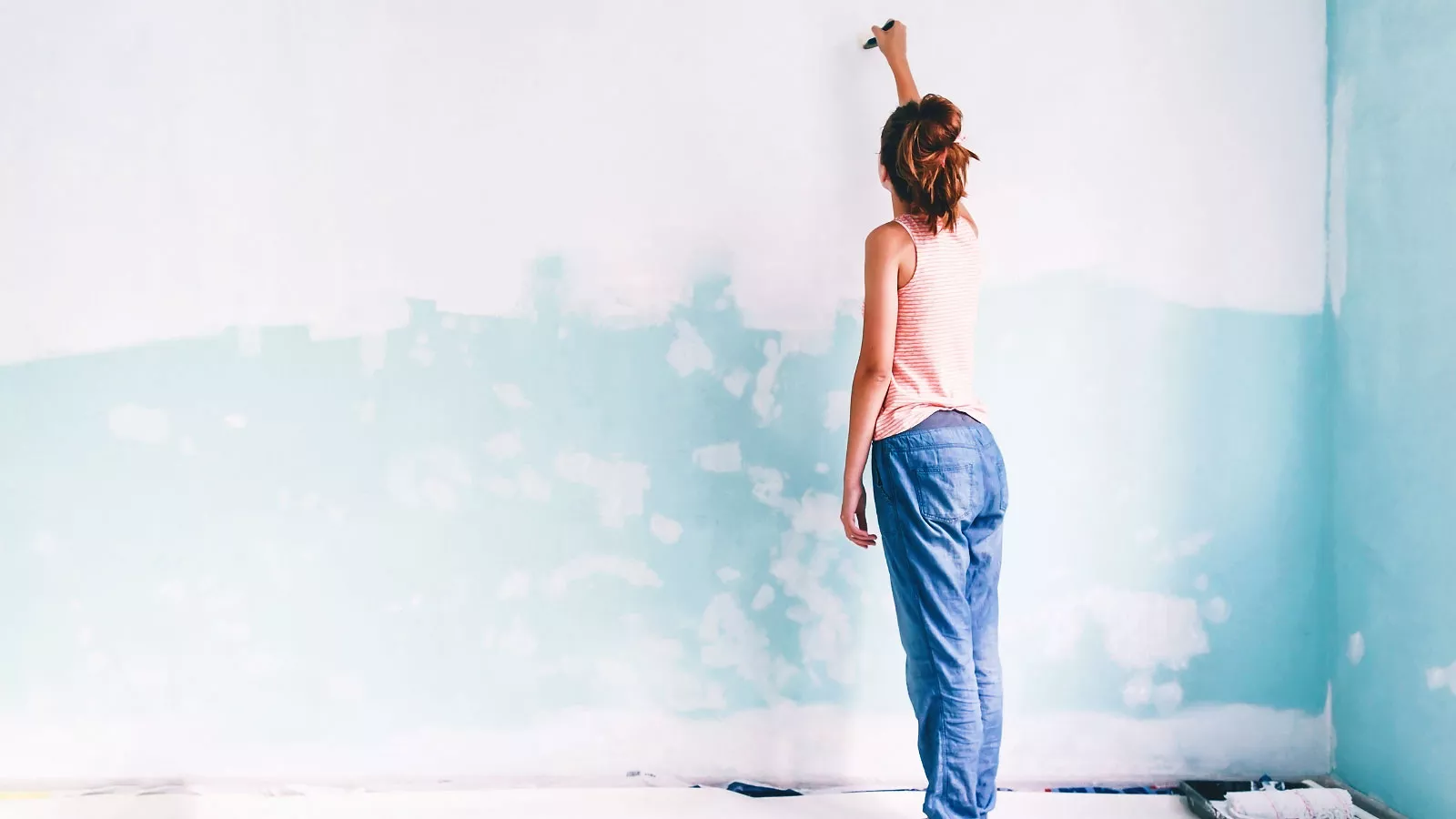Although people living in our climate spend most of their time indoors, either at the office or at home, they rarely associate the quality of the indoor air with their well-being and comfort. This is despite the fact that some ingredients in wall paints and furnishings can increase the concentrations of pollutants in the indoor air completely unnoticed – especially if they have been used to cover large surfaces. Non-specific medical symptoms such as allergic reactions on the skin, asthma and tiredness or headaches can be traced back to, amongst other things, poor quality air in our own four walls.
A step closer to emission-free indoor paints with the Blue Angel
The ingredient in wall paints labelled with the Blue Angel have been tested – above and beyond the legal regulations – to ensure that they are good for the environment and your health. For example, manufacturers are not permitted to add any lead-based pigments, perfluorinated and polyfluorinated chemicals or carcinogenic, mutagenic and toxic substances to these paints. They are subject to strict limits with respect to the emissions of volatile and semi-volatile organic substances.
The labelled wall paints are exclusively designed for use indoors. There is another Blue Angel ecolabel for façade paints designed for external walls (DE-UZ 225).
What you should take into account when buying paint
You can minimise any harmful impact on your health and the environment at the very beginning by selecting the right paint. Therefore, consumers should do some in-depth research before buying the paint: What products are available on the market? Which product is the right one for my renovation project? Emulsion paints can be used for a wide variety of purposes, while silicate paints are free of preservatives but are designed to be used on mineral surfaces. The latter should only be used on mineral surfaces because they bind to the surface.
Other important criteria are the level of coverage and spreading rate of the paint because, depending on the type of product, you may need to use significantly more paint to achieve the desired result.
Consumers can avoid high concentrations of pollutants in the indoor air if they regularly air the room during and after the renovation work (until the wall paint has dried). Please note: If you paint over an old coat of paint, the ingredients in the old paint could be reactivated by the moisture in the new paint. If you are renovating during the warmer months of the year, you can thoroughly air the room without worrying about cooling it down too much and wasting heating energy.
Further information
The attached fact sheet includes further information on what consumers should look out for when buying paint. You can find more information on our Basic Award Criteria “Low-Emission Interior Wall Paints” (DE-UZ 102) and on our certified label holders on our website.
Do you want to keep fully up to date with the latest news from the Blue Angel? Then subscribe to our social media channels:
Instagram: @BLAUERENGEL_UMWELTZEICHEN
Facebook: @BLAUERENGEL
Twitter: @UMWELTENGEL
LinkedIn: @BLAUER ENGEL



